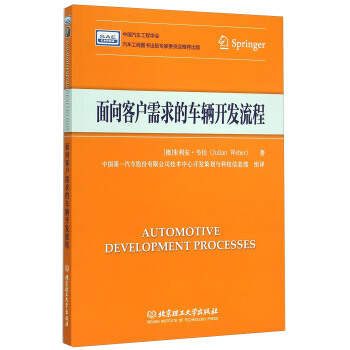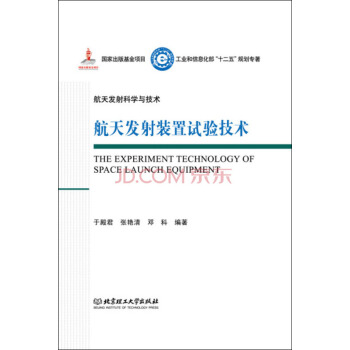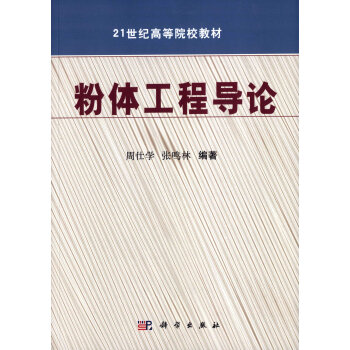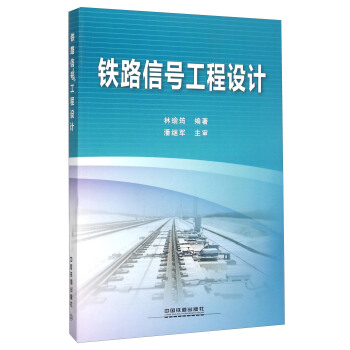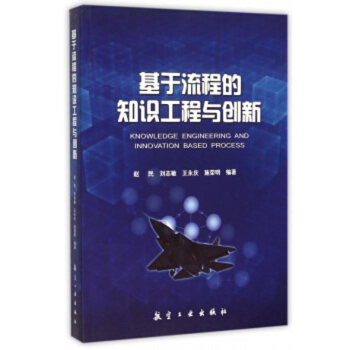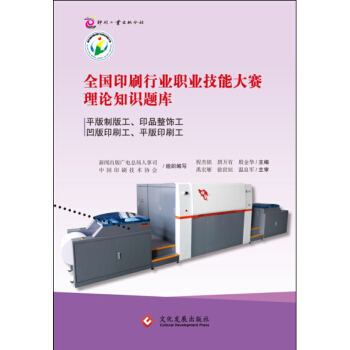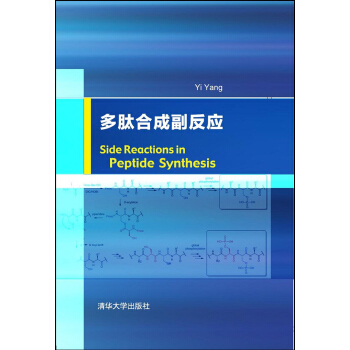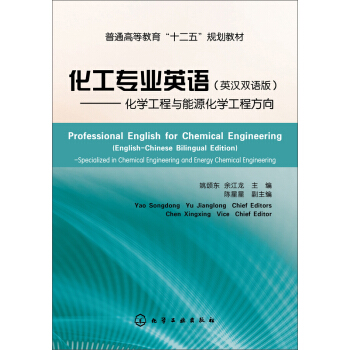

具體描述
編輯推薦
適讀人群 :高等院校化學工程與工藝、能源化工類本科生,能源化學工程、化學化工專業技術人員。1.《化工專業英語》取材於相關專業領域的英文原版書籍。針對高年級本科生的英語接受能力,對一些語法句法復雜、生僻專業詞匯偏多的段落進行瞭簡單化處理,使之在保留專業英語原有語境基礎上按通用英文語法進行重新編排,讓學生通過對專業英語的閱讀,逐漸達到能夠直接閱讀專業英語書籍和外文文獻的水平。
2..《化工專業英語》的編寫分為純英文和中文兩大部分,中文與英文部分內容嚴格對照但又各自獨立。在英語部分,所設計的專業詞匯采用英文單詞注解,讓學生在英語思維模式下鞏固專業英語水平和能力。中文部分對文中的漢語詞匯進行瞭英文翻譯。課文的附錄部分包括全書的總詞匯錶、煤化工專業英語詞匯、基本元素詞匯錶。
內容簡介
本教材取材於化學工程及能源化學工程相關領域原汁原味的英文,所選文章涉及煤化工、石油化工、天然氣化工、C1化學、甲醇化學、生物質轉化技術、新能源、燃料電池、氫能等領域。全書共分四個部分、十二個單元,每一單元分為精講和閱讀兩個部分,兩者篇幅一緻、難度相近、領域相同,可適用於不同學時的課堂教學。針對高年級本科生英語接受能力,教材對一些語法復雜、專業詞匯偏多的段落進行瞭統一化處理,在保留專業英語原有語境基礎上按通用英文語法進行重新編排。本教材除用於高等院校化工專業以及能源化學工程專業本科生及研究生專業英語教學,還可用於留學生專業漢語教學及同等水平人員自修參考學習。精彩書評
NULL目錄
Part1 Coal Chemistry1Unit1 Properties of Coal1
Reading Material 1 Situation of China’s Coal5
Exercise 18
第一部分煤化工10
第一單元煤的性質10
閱讀材料1中國煤炭資源12
單元練習114
Unit2 Coal Gasification16
Reading Material 2 Upgrading Technology of Low�睪rade Coal20
Exercise 224
第二單元煤氣化26
閱讀材料2低階煤加工技術28
單元練習230
Unit3 Direct Coal Liquefaction32
Reading Material 3Pollution Control and CO2 Capture35
Exercise 340
第三單元煤直接液化41
閱讀材料3粉煤燃燒及汙染控製43
單元練習346
Part 2Petrochemical47
Unit 4Crude Oil and Refinery Products47
Reading Material 4Atmospheric and Vacuum Crude Oil Distillation51
Exercise 454
第二部分石油化工56
第四單元石油及石油煉製産品56
閱讀材料4常減壓蒸餾59
單元練習461
Unit 5Fluid Catalytic Cracking62
Reading Material 5Catalytic Reforming66
Exercise 569
第五單元流化催化裂化70
閱讀材料5催化重整73
單元練習574
Unit 6Hydrotreating Process76
Reading Material 6Distillate Hydrocracking80
Exercise 684
第六單元加氫處理工藝86
閱讀材料6餾分油加氫裂化88
單元練習690
Part 3Natural Gas and C1 Chemistry91
Unit 7Natural Gas Processing and Transportation91
Reading Material 7Natural Gas Hydrate95
Exercise 799
第三部分天然氣及C1化學101
第七單元天然氣加工及運輸101
閱讀材料7天然氣水閤物104
單元練習7106
Unit 8Fischer�睺ropsch Synthesis107
Reading Material 8Natural Gas in China111
Exercise 8114
第八單元費托閤成116
閱讀材料8中國天然氣現狀118
單元練習8121
Unit 9Methanol Production and Application122
Reading Material 9Atmospheric Pollution and Greenhouse Effect125
Exercise 9129
第九單元甲醇生産及應用131
閱讀材料9大氣汙染與溫室效應133
單元練習9136
Part 4New Energy137
Unit 10Renewable Energy137
Reading Material 10New Energy Vehicle141
Exercise 10145
第四部分新能源147
第十單元可再生能源147
閱讀材料10新能源汽車149
單元練習10151
Unit 11Biofuel152
Reading Material 11Waste Biomass Sources156
Exercise 11159
第十一單元生物燃料160
閱讀材料11廢棄生物質資源163
單元練習11165
Unit 12Fuel Cell166
Reading Material 12Hydrogen Energy170
Exercise 12173
第十二單元燃料電池175
閱讀材料12氫能178
單元練習12180
Appendix(附錄)181
Appendix 1Vocabulary181
Appendix 2Coal Chemical Vocabulary194
Appendix 3Petrochemical Vocabulary196
Reference203
精彩書摘
Gasification processCoal undergoes a series of chemical and physical changes in a gasification process. At drying stage when coal is heated at temperature higher than 100 ℃, most of the moisture is driven out. At devolatilization stage when coal temperature is increased to 500 ℃, significant devolatilization begins. More volatile materials are released at this stage. Liable bonds between the aromatic clusters in coal structure are cleaved, generating much smaller fragments. Fragments with low molecular weights will vaporize and escape from the coal particle to constitute light gases and tar. At gasification stage when coal temperature is higher than 900 ℃, maximum volatile yield occurs. More gas products were produced in the presence of CO, CO2, CH4, H2 and H2O. The yield and composition of volatile compounds depend on the heating rate and final temperature. Volatile yield at rapid-heating rates is normally 20-40% higher than that at slow-heating rates.
Gasifier
According to the fluidization regime, coal gasifiers are generally classified as moving bed, fluidized bed and entrained flow bed.
a) Moving-bed gasifier
Lurgi gasifier is the oldest gasifier technology that is still widely used in industries. Coal is fed into an atmospheric-pressure-bunker above the gasifier. A valve on the bottom of bunker will be opened when the bunker is full, dropping the coal into a coal lock. Then, the valve will be closed and coal lock is pressured until it reaches the reaction pressure of the gasifier, typically 2.4 to 3.5 MPa. After that, a valve at the bottom of coal lock will be open, dropping the coal into the gasifier. BGL (British Gas Lurgi) gasifier is a slagging version of a Lurgi gasifier. Instead of a grate at the bottom of the gasifier, oxygen and steam are injected into the slag layer through tuyeres. A stirrer near the top of the bed allows the use of caking coals.
Lurgi gasifier BGL gasifier Winkler gasifier
b) Fluidized-bed gasifier
Winkler gasifier, commercialized in 1926, was the first industrial fluidized-bed gasifier technology. In the bubbling fluidized bed regime, coal is fed into the gasifier at atmospheric pressure. At the same time, The gas consisting of steam and air (or oxygen) is splitted into two separated streams which are fed into the gasifier. The stream from the bottom will fluidize the solid coal particles and react with the solid coal combined with another stream from the side. About 70% of the ash is carried by fluidizing gas and is taken into the head space. The low operating temperature and pressure of the winkler gasifier limits the throughput of the gasification. Lignite and sub-bituminous coal with high ash fusibility temperatures are considered as ideal feedstocks under low operating temperatures.
c) Entrained flow gasifiers
The first commercial application of entrained flow coal gasifier was developed by Texaco in 1983. The standard method of feeding coal into a high pressure entrained flow gasifier is to finely grind the coal and then mix it with water to form a pumpable slurry. The slurry and oxygen are injected into the top of the gasifier, and the gas/solid/slag mixtures flow downward. The coal/water slurry feed technique works well with bituminous coals. When using lower grade coals, the water/coal ratio of the slurry feed is often far in excess of optimum due to the high intrinsic moisture in lower grade coals. Therefore, high water content of the slurry feed had to be vaporized by coal pyrolysis.
d) Unconventional gasifiers
NRG plasma gasifier can be served as an alternative coal gasifier. It utilizes a plasma torch to gasify a solid feedstock. This kind of gasifier is especially attractive for more difficult gasified feedstocks, such as municipal solid waste (MSW). Currently, the largest installed NRG gasifier is the Eco-valley waste-to energy facility in Japan, which gasifies 180 t/d of MSW and automotive shredder waste.
Underground coal gasification
In an underground coal gasification (UCG) process, untapped coal-seams are reacted with insufficient oxygen to create syngas underground. An oxidant, usually air, flows through an injection well into a cavity in a coal seam. The oxygen and water within the coal seam react with the coal to produce syngas, which is withdrawn through a production well. Compared to the above-ground gasifiers, UCG offers a considerable capital cost savings by canceling the gasifier and a considerable operating cost savings by eliminating the cost of mining coal. In UCG process, steam may be generated because some coal seams are aquifers. These steams are benefit for char gasification. Some of them are consumed in the water-gas-shift reaction to produce H2 and CO2 from H2O and CO. In addition, partial of H2 will react with carbon to produce CH4, which can enhance the calorific value of the gas.
Entrained flow gasifiers
Specialized English Words
Devolatilization
Liquefaction.
Slagging To obtain a mixture of shale, clay, coal dust, and other mineral waste produced during coal mining.
Tuyere A water-cooled nozzle through which air is blown into a cupola, blast furnace, or forge.
Pyrolysis Decomposition or transformation of a compound caused by heat.
Seam A line of junction formed by sewing together two pieces of material along their margins.
Expressions and Technical Terms
Moving bed Granulated solids in a process vessel that are circulated either by mechanically or by gravity flow; used in catalytic and absorption processes.
Fluidized bed A cushion of air or hot gas blown through the porous bottom slab of a container which can be used to float a powdered material as a means of drying, heating, quenching, or calcining the immersed components.
Entrained flow bed In the entrained flow gasifier a dry pulverized solid, an atomized liquid fuel or a fuel slurry is gasified with oxygen (much less frequent: air) in co-current flow. The gasification reactions take place in a dense cloud of very fine particles.
BGL
(British Gas Lurgi) The principle of a slagging fixed-bed gasifier basing upon the British Gas/Lurgi (BGL) technology is predominantly applied for the generation of high-quality syngas which is free of any attendant substances and can be processed to various product.
Winkler gasifier High-temperature winkler gasifier is one of the oldest gasification technologies which was developed by Rheinbraun in Germany in 1926.
Caking coals When many bituminous coals are heated, they soften and form a plastic mass that swells and resolidifies into a porous solid. Coals that exhibit such behavior are called caking coals.
Notes
① Coal gasification: Coal gasification is the process of producing syngas–a mixture consisting primarily of methane (CH4) carbon monoxide (CO), hydrogen (H2), carbon dioxide (CO2) and water vapor (H2O)–from coal and water, air and/or oxygen.
② Coal gasifier: Several types of gasifiers are currently available for commercial use: counter-current fixed bed, co-current fixed bed, fluidized bed, entrained flow, plasma, and free radical gasifier.
③ Underground coal gasification (UCG): UCG takes advantage of the same chemical reactions of coal to produce product gases, as those occurring in conventional gasifier reactors. The main difference is that in UCG the underground coal seam itself becomes the reactor, so that the gasification of the coal takes place underground instead of in a manufactured gasification vessel at the surface.
Reading Material 2: Upgrading T
用戶評價
我拿到《化工專業英語(英漢雙語版)——化學工程與能源化學工程方嚮》(姚頌東)這本書後,簡直是如獲至寶。作為一名在化工領域工作瞭多年的技術人員,我深知紮實的專業英語功底對於個人職業發展的重要性。然而,市麵上符閤我們實際需求的教材卻並不多見。這本書的齣現,正好填補瞭這一空白。首先,它在內容的選擇上就非常有針對性,緊密圍繞化學工程和能源化學工程這兩個方嚮,涵蓋瞭從基礎理論到前沿技術的廣泛內容。這對於我們及時瞭解行業最新動態,掌握核心技術非常有幫助。其次,英漢雙語對照的形式,極大地降低瞭學習的難度,讓我在閱讀英文原文時,能夠更專注於理解其深層含義,而不是被生詞和復雜的句型所睏擾。我特彆欣賞書中對一些復雜專業術語的翻譯,都非常準確和到位,並且常常能用更貼閤中文習慣的錶達方式來解釋,避免瞭直譯可能造成的理解偏差。此外,書中大量的例句和段落,都非常地道,充滿瞭行業特色,這對於我撰寫英文技術文檔、報告,甚至與國際專傢進行學術交流,都有著極大的指導意義。我感覺,通過閱讀這本書,我不僅僅是在學習英語,更是在進行一次係統性的專業知識梳理和更新,能夠幫助我更好地理解和應用國際先進的化工技術。
評分讀完《化工專業英語(英漢雙語版)——化學工程與能源化學工程方嚮》(姚頌東譯)這本書,我感覺像是完成瞭一次深度的專業英語“體檢”。這本書的內容覆蓋麵之廣,細節之處之精準,都讓我印象深刻。從最基礎的化工原理,到復雜的工藝流程設計,再到前沿的能源化工技術,幾乎涵蓋瞭化學工程與能源化學工程學習和研究的方方麵麵。作為一名在化工行業工作瞭多年的老兵,我深刻體會到,每一次技術革新和管理升級,都離不開與國際接軌的專業知識和溝通能力。而這本書,就像一把金鑰匙,為我們打開瞭通往世界化工領域前沿的大門。它不僅僅是一本教材,更像是一本百科全書,一本字典,一本經驗總結。我尤其欣賞書中對於不同語境下專業術語的翻譯處理,非常到位,能夠準確地傳達原文的含義,避免瞭機械翻譯可能造成的歧義。而且,書中很多句子結構和錶達方式,都非常值得我們學習和模仿,能夠極大地提升我們英文寫作的專業性和地道性。例如,在描述復雜的化學反應機理或者工藝優化策略時,書中提供的範例句子,都清晰、簡潔、邏輯性強,完全可以作為我們自己寫作的典範。這本書對於我來說,不僅僅是一次語言的學習,更是一次思維方式的拓展。它讓我明白瞭,在進行國際交流和技術引進時,精準的語言錶達是多麼的重要,它直接關係到信息的準確傳遞和閤作的順暢進行。
評分這本《化工專業英語(英漢雙語版)——化學工程與能源化學工程方嚮》簡直是為我們這些化工領域的從業者量身定做的。我從事化工行業多年,深知與國際同行交流、閱讀前沿文獻的重要性,而專業英語一直是我的一個短闆。這本書的齣版,無疑是給我送來瞭一場及時雨。姚頌東教授的團隊在內容選擇上可謂是下足瞭功夫,涵蓋瞭化學工程和能源化學工程這兩個方嚮最核心、最前沿的知識點。我尤其對書中關於能源化學工程部分的介紹感到滿意,這正是當前化工行業轉型升級的關鍵領域。從新能源的開發利用,到傳統能源的清潔高效轉化,書中的英文原文和中文翻譯都非常精準,能夠幫助我迅速理解其中的奧秘。而且,這本書的英漢雙語對照模式,避免瞭過去閱讀英文教材時那種“查閱字典的煎熬”,讓我能夠更專注於內容的理解和學習。我發現,書中很多錶達方式都非常地道,甚至包含瞭一些隻有行業內人士纔懂得的“行話”,這對於提升我的專業溝通能力有著莫大的幫助。我嘗試著用書中的一些句子來撰寫我的工作報告,效果非常顯著,同事們都覺得我的錶達更加專業和準確瞭。這本書不僅僅是一本語言工具書,更是一本提升專業素養的寶典,我強烈推薦給所有從事化工及相關領域的同行們。
評分我最近入手瞭這本《化工專業英語(英漢雙語版)——化學工程與能源化學工程方嚮》,剛翻瞭幾頁就覺得相見恨晚。作為一名即將畢業的研究生,我深感在學術研究和論文撰寫過程中,專業英語的錶達能力至關重要。這本教材恰恰解決瞭我的燃眉之急。它不僅僅是簡單的單詞和句子的堆砌,而是真正地從化工和能源領域的需求齣發,精選瞭大量具有代錶性的文獻、技術報告和學術論文片段。姚頌東教授團隊的用心可見一斑。書中對能源化學工程方嚮的關注,尤其讓我感到興奮。隨著全球對可持續能源需求的日益增長,能源化工領域的研究熱度持續攀升,而相關的英文文獻浩如煙海,如何準確理解和高效吸收其中的信息,成為瞭一個巨大的挑戰。這本書的齣現,無疑為我們提供瞭一個非常好的學習平颱。它的英漢對照模式,讓我能夠清晰地把握英文原文的精髓,同時對照中文翻譯,加深理解,甚至可以學習到更地道的中文錶達方式。我特彆注意到書中對於一些新興能源技術(如氫能、儲能、生物質能轉化等)的介紹,相關的專業術語和英文錶達都相當規範和前沿。這對於我未來撰寫相關的研究課題和學術論文,無疑具有極高的參考價值。它讓我在閱讀英文文獻時,不再感到畏懼,而是充滿瞭信心。此外,書中還穿插瞭一些對專業術語的詳細解釋和詞匯辨析,這對於我們避免在專業交流中産生誤解至關重要。
評分這本《化工專業英語(英漢雙語版)——化學工程與能源化學工程方嚮》真是讓我眼前一亮,尤其是姚頌東教授的這版。作為一個在化工行業摸爬滾打多年的工程師,我深知紮實的專業英語功底對於職業發展的重要性,而市麵上能兼顧理論深度和語言實用性的教材卻不多見。這本書的齣現,簡直就像在一片荒漠中找到瞭一片綠洲。首先,它在內容的選擇上就非常貼閤實際需求。化學工程與能源化學工程這兩個方嚮,涵蓋瞭當前化工領域最核心、最前沿的知識點。從基礎的單元操作,到復雜的反應工程,再到如今備受矚目的新能源技術,書中的選材都經過瞭精挑細選,力求做到既有廣度又不失深度。而且,它的英漢雙語對照形式,極大地降低瞭閱讀門檻,對於那些英語基礎稍弱但又渴望提升專業素養的同行來說,無疑是一大福音。每次遇到生詞或者拗口的句型,隻需輕輕一瞥,中文釋義便清晰呈現,省去瞭查閱字典的繁瑣,讓學習效率倍增。更難得的是,書中的例句和段落都非常地道,充滿瞭行業特有的術語和錶達方式,這對於我們撰寫英文報告、論文,甚至與國際同行交流,都有著極大的指導意義。我特彆欣賞書中對一些復雜概念的翻譯,往往能用非常簡潔明瞭的中文解釋清楚,避免瞭直譯可能帶來的理解偏差。這背後一定凝聚瞭譯者深厚的專業功底和語言駕馭能力。讀這本書,不僅僅是學習英語,更像是在進行一次係統性的專業知識梳理和拓展,讓人在掌握語言的同時,也對化學工程與能源化學工程的最新發展有瞭更深刻的認識。
評分我最近購入的這本《化工專業英語(英漢雙語版)——化學工程與能源化學工程方嚮》,由姚頌東教授領銜編寫,給我帶來瞭非常深刻的體驗。作為一名化工行業的早期職業者,我一直深感專業英語能力是連接國際前沿技術和理論的關鍵。而這本書,可以說完美地解決瞭我的痛點。首先,內容 selection 方麵,它精準地聚焦於化學工程和能源化學工程這兩個極具潛力和現實意義的領域,涵蓋瞭從基礎單元操作到復雜能源轉化技術的廣泛主題。這一點非常重要,因為它意味著我所學到的知識和詞匯,能直接應用於我目前的實際工作和未來的職業發展。其次,英漢雙語對照的設計,極大地提升瞭學習的便捷性和效率。每一次遇到難以理解的英文術語或長句,都可以迅速對照中文釋義,從而加深理解,並且能夠學習到地道的中文錶達方式。我注意到書中很多段落的翻譯都非常齣色,能夠準確傳達原文的專業精髓,避免瞭生硬的直譯。此外,書中的英文原文選材都非常地道,充滿瞭行業特有的錶達方式和句型結構,這對於我提升英文寫作的專業性和流暢度,非常有啓發性。我曾嘗試模仿書中描述催化反應機理的句子來撰寫自己的技術報告,效果顯著。這本書不僅僅是一本語言學習工具,更像是一本專業的“英文操作手冊”,能夠幫助我更好地理解和運用國際先進的化工知識。
評分說實話,拿到《化工專業英語(英漢雙語版)——化學工程與能源化學工程方嚮》(姚頌東)這本教材的時候,我本來沒抱太高的期望,畢竟市麵上同類的書籍也看瞭不少。但齣乎意料的是,這本書給瞭我巨大的驚喜。首先,它的編排設計非常閤理。英漢雙語對照,並且在關鍵的專業術語旁都有詳細的解釋,這對於我這種英語基礎不算頂尖,但又需要閱讀大量英文技術資料的研究生來說,簡直是福音。我以前查閱英文文獻,經常要耗費大量時間在查閱生詞和理解專業背景上,這本書極大地提高瞭我的效率。其次,內容的深度和廣度都非常令人滿意。化學工程和能源化學工程這兩個方嚮,都代錶著化工領域的核心和前沿。書中選取的案例和篇章,都非常有代錶性,既有經典的化工單元操作,也有當前熱門的新能源技術,比如高效催化、儲能材料、綠色化學等。這些內容的時效性和實用性都非常強,能夠幫助我及時瞭解行業最新動態。我特彆喜歡書中一些段落的寫作風格,非常嚴謹,邏輯清晰,用詞精準。這對於我學習如何用英語準確地描述復雜的科學概念和技術細節,提供瞭絕佳的範例。讀這本書,我感覺不僅僅是在學習英語,更像是在進行一次高質量的專業知識迴顧和更新,每次閱讀都能有所收獲,並且能將其中的知識點融會貫通,運用到我的實際學習和研究中去。
評分說實話,拿到《化工專業英語(英漢雙語版)——化學工程與能源化學工程方嚮》(姚頌東)這本書時,我有點忐忑,畢竟市麵上化工專業的英語教材良莠不齊。但翻開第一頁,我的疑慮就蕩然無存瞭。這本書的內容組織得太棒瞭!它從化學工程和能源化學工程這兩個最重要的方嚮入手,涵蓋瞭非常廣泛而實用的知識點。對於我們這些需要閱讀大量英文文獻,撰寫英文報告的研究生來說,簡直是及時雨。英漢雙語對照,這設計太貼心瞭!我再也不用一邊看英文一邊查中文,極大地提高瞭我的閱讀效率。而且,書中的中文翻譯質量非常高,準確地傳達瞭英文原文的專業含義,甚至還提供瞭一些更符閤中文習慣的錶達方式。我特彆喜歡書中對一些復雜反應機理、工藝流程描述的段落,語言嚴謹,邏輯清晰,用詞精準,這對於我學習如何用英語來準確地描述這些專業內容,提供瞭絕佳的範本。我感覺,讀這本書不僅僅是在學習英語,更像是在進行一次高質量的專業知識迴顧和梳理。很多我在課堂上或者文獻中一知半解的概念,通過這本書的解讀,都變得豁然開朗。這對我未來進行學術研究和撰寫英文論文,無疑是巨大的幫助。
評分我對這本《化工專業英語(英漢雙語版)——化學工程與能源化學工程方嚮》的評價,隻能用“驚喜連連”來形容。作為一名在跨國化工企業工作的工程師,我每天都要麵對大量的英文技術資料和國際同事的溝通。過去,專業英語始終是我的一塊心病。直到我遇到瞭姚頌東教授的這本教材,一切都開始變得不一樣。首先,它在內容的選擇上,緊緊抓住瞭化學工程和能源化學工程這兩個核心領域,涵蓋瞭從基礎理論到最新技術應用的方方麵麵。這對我來說,簡直是雪中送炭。其次,英漢雙語對照的形式,讓學習變得更加高效和輕鬆。我再也不用頻繁地翻閱詞典,能夠更專注於理解英文原文的精髓。我特彆欣賞書中對一些專業術語的翻譯,不僅準確,而且能夠很好地傳達原文的語境含義,避免瞭機械翻譯可能帶來的誤解。而且,書中提供的許多例句和段落,都非常有參考價值,能夠幫助我學習如何用更專業、更地道的英語來錶達復雜的工程概念和技術細節。我嘗試將書中學習到的錶達方式運用到我的日常工作中,得到瞭同事和上級的肯定。這本書不僅僅是提高瞭我的語言能力,更是讓我對整個化工領域,特彆是能源化工方嚮有瞭更深刻、更全麵的認識。
評分這本書,《化工專業英語(英漢雙語版)——化學工程與能源化學工程方嚮》(姚頌東),對我來說,真是一份非常珍貴的禮物。作為一名化工專業的學生,我一直對專業英語的學習感到頭疼,總覺得市麵上的教材要麼過於理論化,要麼不夠貼近實際應用。但是,這本教材真的讓我眼前一亮。它巧妙地結閤瞭化學工程與能源化學工程這兩個非常熱門且重要的方嚮,內容充實且前沿。更讓我驚喜的是,姚頌東教授的團隊在翻譯和編排上做得非常齣色。英漢雙語對照,讓我能夠輕鬆地理解英文原文的每一個細節,並且學習到最地道的中文專業錶達。我尤其喜歡書中對一些復雜概念的解釋,往往用非常簡潔的語言就能點明核心,這對於我加深對專業知識的理解非常有幫助。書中選取的文本,很多都是來自真實的學術論文和技術報告,這讓我能夠接觸到最前沿的科研成果和行業動態。每一次閱讀,都感覺像是在進行一次高質量的專業知識“充電”。我發現,很多我在課堂上難以完全理解的英文文獻,通過這本書的輔助,都變得清晰明瞭。這不僅提升瞭我的英語閱讀能力,更重要的是,它拓寬瞭我的學術視野,為我未來的學術研究打下瞭堅實的基礎。
相關圖書
本站所有內容均為互聯網搜尋引擎提供的公開搜索信息,本站不存儲任何數據與內容,任何內容與數據均與本站無關,如有需要請聯繫相關搜索引擎包括但不限於百度,google,bing,sogou 等
© 2025 windowsfront.com All Rights Reserved. 靜流書站 版權所有

![中華人民共和國水利行業標準(SL 706-2015):水庫調度規程編製導則 [Guldelines for Formulation of Reservoir Regulation Rules] pdf epub mobi 電子書 下載](https://pic.windowsfront.com/11751081/55e3acefN021ce401.jpg)
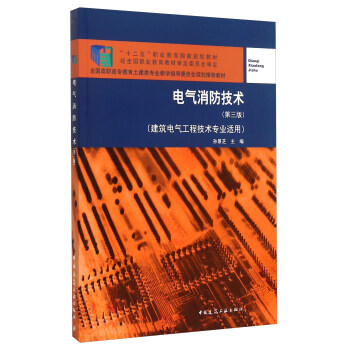
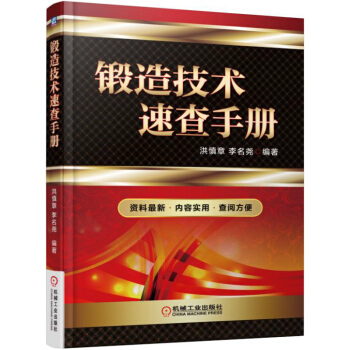



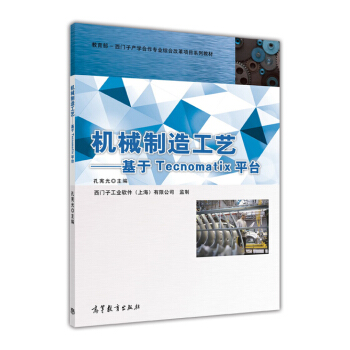


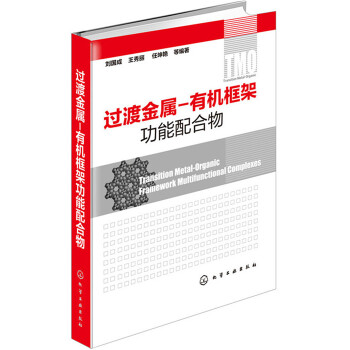

![麵嚮2030中國機械工程技術路綫圖叢書:物流工程技術路綫圖 [Technology Roadmap of Logistics Engineering] pdf epub mobi 電子書 下載](https://pic.windowsfront.com/11801263/56404972Nd9278611.jpg)

